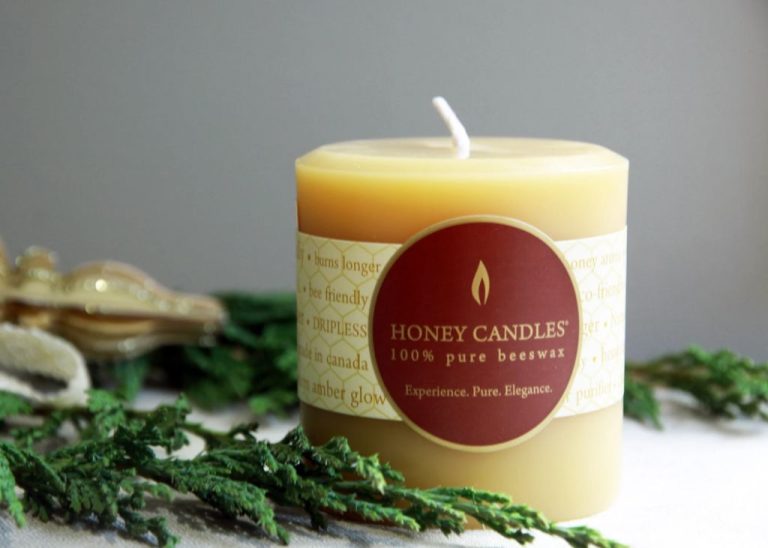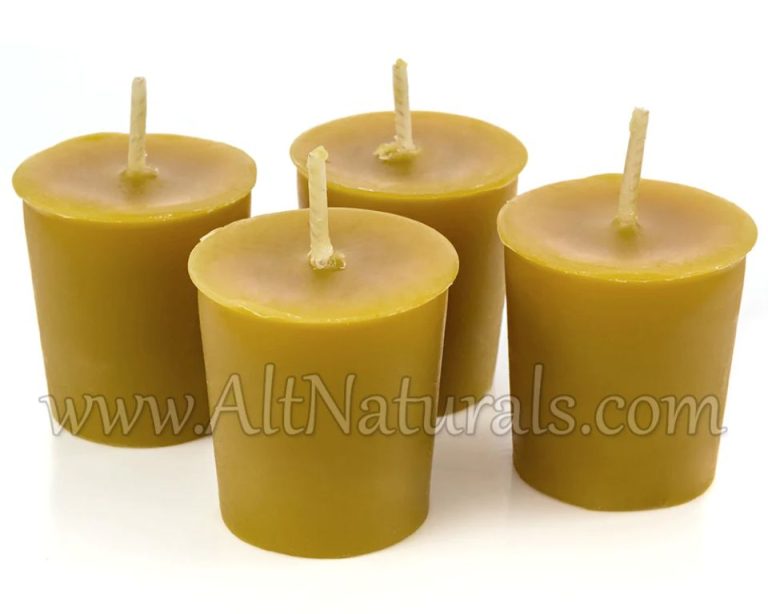What Are Waxes Built From?
Waxes are a diverse group of organic compounds that are pliable solids at room temperature. They can be found in nature or synthesized artificially. Their unique physical and chemical properties lend themselves to a wide array of uses. Waxes have a low viscosity at just above their melting point, making them easy to spread or mold. As they cool, waxes solidify into a soft, pliable state due to the crystal structure formed by their long hydrocarbon molecules. They are hydrophobic and chemically inert, providing protection and lubrication across industries ranging from cosmetics to cast molding.
Chemical Composition
Waxes are organic compounds composed of long chains of carbon and hydrogen atoms bonded to fatty acids and alcohols. The fatty acids and alcohols that make up waxes are known as wax esters. The fatty acids commonly found in waxes are palmitic, stearic, oleic, and linoleic acids. The alcohols are typically long chain fatty alcohols.
The wax esters are formed through an esterification reaction between the fatty acids and fatty alcohols. This reaction links the carboxyl group (-COOH) of the fatty acid to the hydroxyl group (-OH) of the fatty alcohol, creating an ester linkage (-COO-) and releasing a water molecule. The resulting wax ester molecule contains a long non-polar hydrocarbon chain from the fatty acid and alcohol.
The length of the fatty acid and alcohol chains, as well as the types of acids and alcohols present, help determine the physical properties of the wax such as melting point, hardness, and oil content. By varying the wax ester composition, different waxes can be engineered with specific properties for desired applications.
Natural Waxes
Natural waxes are waxes derived from plants, animals, and insects. Some of the most common natural waxes include:
Beeswax
Beeswax is secreted by honey bees to construct their honeycombs. It consists of a mixture of fatty acids and long chain alcohols. Beeswax has a high melting point of around 62-65°C and is hard and brittle at room temperature. It is widely used in food, cosmetics, pharmaceuticals, and candle making.
Carnauba wax
Carnauba wax comes from the leaves of the Copernicia prunifera palm grown in Brazil. It has the highest melting point of natural waxes at 82-86°C. Carnauba wax is very hard and has good glossiness, making it useful for waxing and polishing products.
Candelilla wax
Candelilla wax is derived from the plant Euphorbia antisyphilitica found in Mexico and Texas. It has a melting point of 68-79°C. Candelilla wax is used as a substitute for carnauba wax and beeswax.
Rice bran wax
Rice bran wax is obtained from rice bran oil. It has a melting point of 79-83°C. Rice bran wax is often used in lip balms, creams, and lotions.
Soy wax
Soy wax is made from hydrogenated soybean oil. It melts at 55-60°C and has properties similar to paraffin wax. Soy wax is commonly used for making candles and soaps.
Mineral Waxes
Mineral waxes are derived from petroleum and coal sources. They make up a significant portion of the global wax market. The key mineral waxes include:
Paraffin
Paraffin wax is a white or colorless soft solid composed of straight chain alkanes. It is extracted during the refining of crude oil. Paraffin has a crystalline structure and melts between 47°C and 64°C. It is odorless and tasteless. Paraffin is widely used for making candles, as a lubricant, electrical insulator, and in cosmetics.
Microcrystalline wax
Microcrystalline waxes are a type of petroleum wax that is more elastic and flexible compared to paraffin. It is produced from the residual lube oil fractions from petroleum distillation and is refined further. Microcrystalline waxes melt at higher temperatures between 63°C and 93°C. They are often used in cosmetics, polishes, electrical insulation, and friction reducing additives.
Montan wax
Montan wax is derived from lignite and coal. It is harder and more brittle than other mineral waxes. Montan wax is composed of long chain alkanes and acids and melts between 82-95°C. It is used in lubricants, coatings, polishes, and electrical insulation.
Ozokerite
Ozokerite is a naturally occurring mineral wax composed of hydrocarbons. It has a high melting point of 72-74°C. Ozokerite can be used to make candles, in insulation, cosmetics, and polishes. However, its use is limited due to rarity.
Synthetic Waxes
Synthetic waxes are produced by polymerization or other chemical reactions. Some common types of synthetic waxes include:
Fisher-Tropsch Wax
This wax is produced by the Fisher-Tropsch process, in which synthesis gas (a mixture of carbon monoxide and hydrogen) is turned into liquid hydrocarbons of various forms. The resulting waxes resemble paraffin wax, but contain virtually no hydrocarbons other than n-alkanes.
Polyethylene Wax
This wax is made by the polymerization of ethylene. Polyethylene wax consists of long straight chains of ethylene molecules. It has a molecular weight that typically ranges from 500 to 20,000 g/mol.
Polytetrafluoroethylene (PTFE) Wax
PTFE wax is a synthetic fluoropolymer with applications in areas like lubricants, coatings, plastics and sealants. It is known by trade names such as Teflon. PTFE wax has a very high melting point and excellent chemical resistance.
Wax Crystal Structure
Waxes have a crystalline structure, meaning the molecules are arranged in an ordered, repeating three-dimensional pattern. The crystalline nature of waxes affects important properties like melting point, hardness, and flexibility.
Waxes contain a mixture of different hydrocarbon molecules, including straight chains, branched chains, and rings. The length of the molecules varies as well. Longer molecules, like those found in beeswax, form larger, more intricate crystalline structures and produce a harder, more brittle wax. Shorter molecules, like those in paraffin wax, form smaller, simpler crystals and produce a softer, more pliable wax.
The precise crystalline structure and the varying sizes and shapes of molecules are what give each type of wax its unique properties. By understanding and controlling the wax crystal structure, manufacturers can tweak properties like hardness and melting point to suit specific applications.
Key Properties
Waxes have some important physical properties that make them useful for various applications:
Melting point – Waxes typically melt around room temperature, unlike fats which melt at much lower temperatures. The melting point of a wax depends on its composition, with some waxes melting as low as 37°C and others over 100°C. The melting point determines suitable uses for a wax.
Hardness – Waxes are hard, brittle solids at room temperature. Their hardness comes from the long hydrocarbon chains and crystal structure. Hard waxes can be used to make candles, crayons, and polishes.
Flexibility – Although hard, waxes are somewhat flexible when warmed. This allows them to be molded into various shapes. Microcrystalline waxes are more flexible than paraffin waxes.
Lubricity – Waxes provide good lubrication and release properties. This makes them useful as mold release agents, and in lubricants like car wax. Their lubricity comes from their hydrophobic, non-polar nature.
Manufacturing Process
There are a few main ways that waxes are manufactured:
Extraction
Natural waxes like beeswax, lanolin, and carnauba wax are extracted directly from animal and plant sources. Beeswax, for example, is harvested from honeycomb built by bees. The wax is melted and purified to remove impurities.
Synthetic Production
Many commercial waxes are synthetically produced from petroleum, coal, or plants. Synthetic waxes can be tailored to have specific properties like melting point, hardness, and flexibility. Common synthetic waxes include paraffin wax, microcrystalline wax, and polyethylene wax.
Purification
Whether natural or synthetic, crude waxes undergo purification to remove undesirable components. The wax is usually melted, filtered, and distilled multiple times to increase purity.
Additives
Additives like plasticizers or emulsifiers may be blended into waxes to modify properties. Adding oil makes a wax more flexible, while emulsifiers help disperse wax in water.
Major Uses of Waxes
Waxes have a diverse range of uses across many industries and products. Some of the major uses of waxes include:
Candles
Candles remain one of the most common uses of waxes. Paraffin wax, derived from petroleum, is the primary wax used for candle making today. Beeswax candles are also popular due to their natural origin. The wax provides the fuel source for the candle flame.
Polishes
Waxes are integral ingredients in polish products for wood, leather, vehicles, and more. The waxes help produce a protective coating and glossy shine. Carnauba wax from palm leaves is commonly used in car polishes.
Cosmetics
Waxes play an important role in many cosmetic products like lip balms, lotions, creams, and grooming waxes. Beeswax and paraffin wax are common ingredients that help protect the skin and give consistency.
Packaging
Coatings containing wax help make packaging moisture resistant and prevent leaking. Wax coatings are commonly applied to cartons, paper cups, laminated paperboards, and corrugated boxes.
Crayons
Paraffin wax is the primary ingredient that forms the solid shape and provides coloring ability in crayons. Additives like pigments and carnuba wax help strengthen the wax and produce desired properties.
Conclusion
In summary, waxes are composed primarily of long-chain hydrocarbons that impart their unique physical and chemical properties. They occur naturally in animals and plants, are produced from minerals, and can be synthesized industrially. The crystalline structure of waxes contributes to characteristics like hardness and melting point. Key properties include hydrophobicity, moldability, thermal stability, and lubricity. Waxes are manufactured through various processes of extraction, distillation, and chemical synthesis. They serve important functions across industries like pharmaceuticals, cosmetics, food production, and manufacturing.
Waxes play an indispensable role in everyday life. From the wax coating on cheese to the paraffin in candles, waxes enable the texture, preservation, and performance of many products we use daily. Their versatility across applications highlights the value of these compounds derived from natural and artificial sources. Understanding the science behind waxes allows us to engineer specialized forms to meet the needs of modern products and processes.





